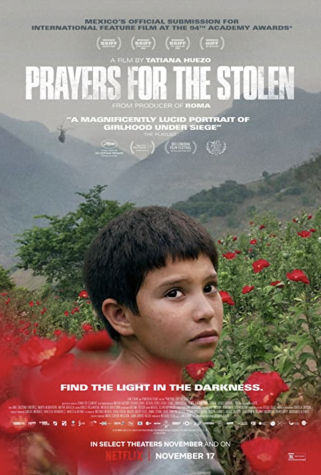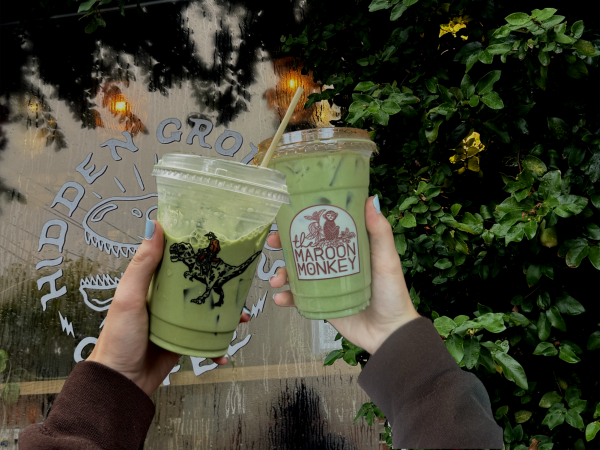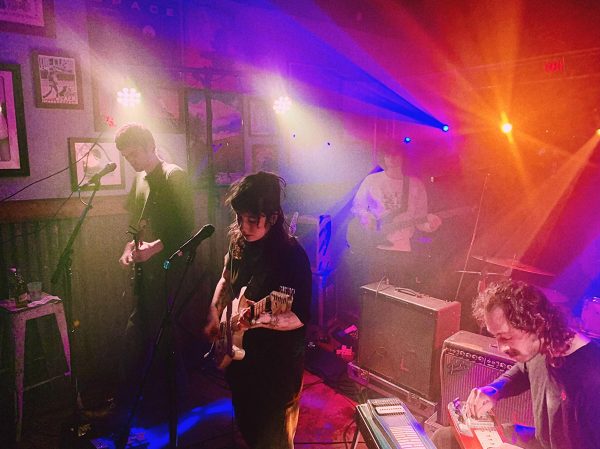REVIEW: ‘Prayers for the Stolen’ shows the horrific status of childhood in Mexico
Prayers for the Stolen is a film directed by Tatiana Huezo, loosely based on Jennifer Clement’s book by the same name. It follows a young girl by the name of Ana in rural Mexico, in which the drug cartels run wild and many in the village make their living by farming poppy flowers. The first girl, Juana, is taken in the village and as the story unfolds, it’s evident that she has been taken by the cartel and that they are not going to stop taking young girls. The story is not fully fictional—the statistics of missing women and girls in rural Mexican villages are on the rise. Though Mexican government officials do not have a total of those gone missing, the Human Rights Watch estimates that at least 27,000 women and girls have gone missing since 2006. The femicide has scarred the country. With women found in sewage canals, girls sold into prostitution and women taken simply based on skin color, or for being located in a village occupied by the cartel. Due to corruption and limited resources of the Mexican government, they are unable or unwilling to solve this crisis at its root.

Ana is overwhelmed by her surroundings from a young age, burdened by the problems in her community. Her father works on ‘the other side’, meaning in the U.S. She lives with her mother in a very rural village in Mexico, where their phones only receive service from on top of the hill they farm poppies on. Her mother must call her father for financial and emotional support from the top of this hill. When he stops answering and girls begin to go missing, she becomes drunk and increasingly violent. Her childhood is happy, but stained by the events taking place in her village. Her only saving graces are her two friends, Maria and Paula, who have comforted each other since they were children. She does not know what is happening, but she knows Juana, the girl who was taken by the cartel, will not come home and is taunted with this thought by her male friend. She meets a slightly older boy at a bull riding contest named Margarito and he quickly becomes her love interest in the movie. She finally begins to feel as though she is a real woman, even beginning her menstrual cycle soon after.
The helicopters that sometimes circle overhead drop tear gas on Paula and though she runs to escape it, she is not fast enough. This is just one of the many small torments those in the village go through. The girls have to witness altercations between the police and the cartel, violence among their community, families leaving and the grief experienced by those who have lost loved ones to the cartel. The cartel drives through town shooting at a clinic for children. She must watch her mother be told to “give her up the easy way” by the cartel, followed by gunshots fired at the house and her mother. It is clear they want Ana, but her mother is aggressively protective, even though her life is at risk. The entire community, fed up with having their daughters taken and fields burned, uses their anger to burn a cartel truck. It is evident there is no one to be trusted but those who have stood by her entire life.
One of the key themes in this movie is the undying, desperate love a mother and her daughter share. Even though Ana’s mother may be violent with her, she always places Ana first, almost giving up her life in Ana’s place. She knows that if she is not tough on her, Ana may suffer a terrible fate and end up exactly like the dead girl they found near their house. She struggles with not having her father there to help her, just as her mother struggles with not having anyone to help her raise her child.
Ana is forced to grow up unnaturally fast, turning the narrative of a coming of age film on its head. She should logically be a child in every way, however the events around her make her an adult before she even has an understanding of herself. It is both beautiful and heartbreaking to watch Ana’s life unfold. Watching Ana and her friends get their hair cut into boyish cuts to disguise their genders shows how young they really are—they silently sob over their beautiful hair, when they do not understand what is at stake. At the same time, you watch them take in the news of the school shutting down, or their friends going missing with calm faces and return to playing games immediately afterwards. It’s as if reality cannot quite reach them. Her story is told in a way that does not have to beg for understanding or empathy. Everything is seen in her eyes, her body language and the emotion in her voice, or flowing down her face.
In June 2021, the film was selected to compete in the Un Certain Regard section at the 2021 Cannes Film Festival and won a special mention; it also won the Best International Feature Film at the 94th Academy Awards. It’s no wonder why; not only does the film highlight the femicide occurring in Mexico so clearly, but it shows raw human emotion through the eyes of a budding child, coming of age in a place where she could be harmed at any moment. Constant tension keeps everyone in the village on edge, reflecting to viewers the unique type of torture that is witnessed by those experiencing life in rural Mexican villages.












P B Nolet • Jan 5, 2023 at 3:59 pm
Beautiful, Moving, Real Reality, Such Bravery, Respect and WHERE IS GOD?
They Need Protection
God Bless them ALL ❤️